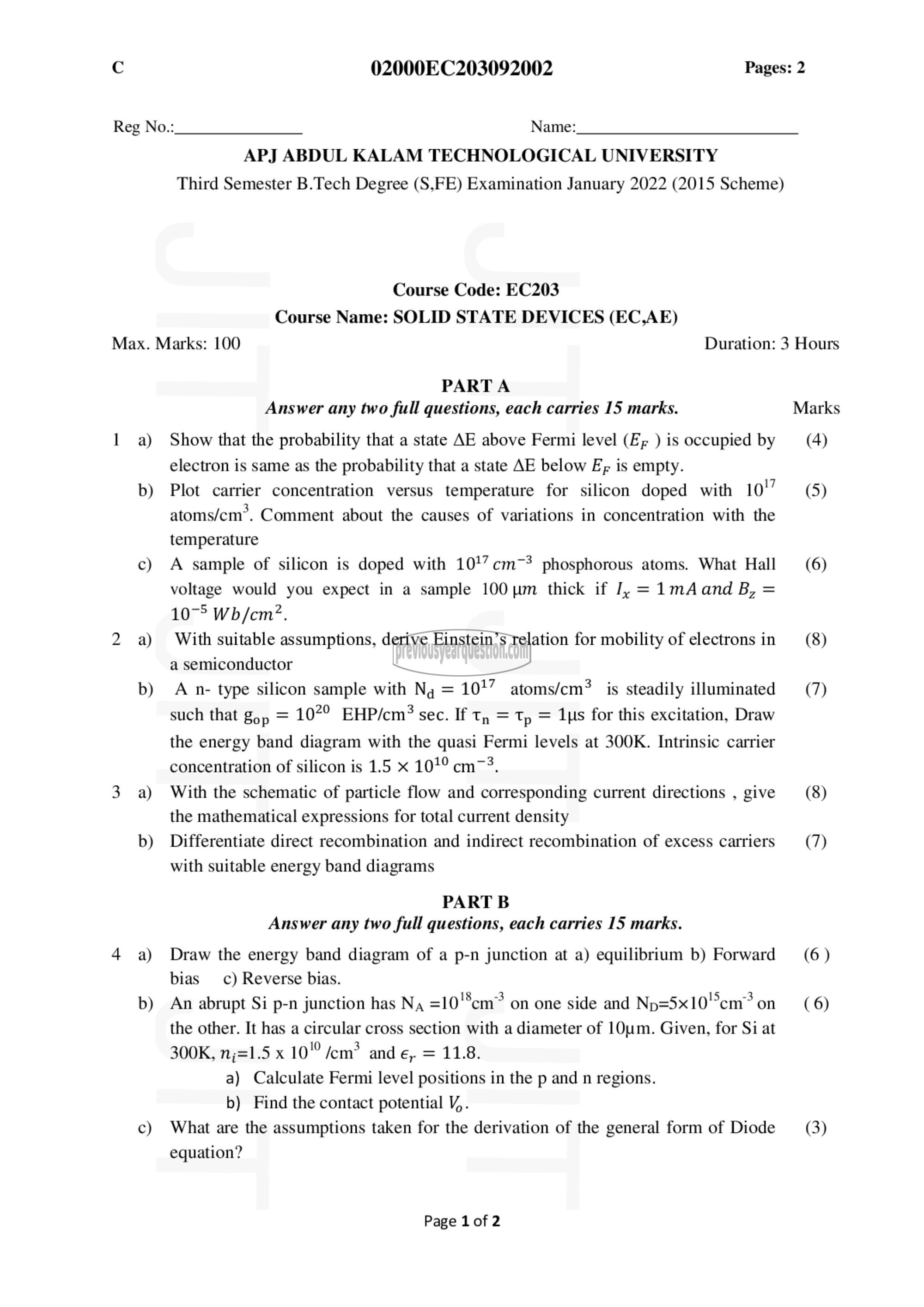APJ ABDUL KALAM TECHNOLOGICAL UNIVERSITY Previous Years Question Paper & Answer
Semester : SEMESTER 3
Subject : Solid State Devices
Year : 2022
Term : JANUARY
Scheme : 2015 Full Time
Course Code : EC 203
Page:1
त 02000EC203092002 Pages: 2
Reg No.: Name:
APJ ABDUL KALAM TECHNOLOGICAL UNIVERSITY
Third Semester B.Tech Degree (S,FE) Examination January 2022 (2015 Scheme)
Course Code: EC203
Course Name: SOLID STATE DEVICES (EC,AE)
Max. Marks: 100 Duration: 3 Hours
PARTA
Answer any two full questions, each carries 15 marks. Marks
1 8) Show that the probability that a state AE above Fermi level (Ez ) is occupied (4)
electron is same as the probability that a state AE below مق is empty.
b) Plot carrier concentration versus temperature for silicon doped with 1011 (5)
atoms/cm*, Comment about the causes of variations in concentration with the
temperature
©) A sample of silicon is doped with 107 അ? phosphorous atoms. What Hall (6)
voltage would you expect in a sample 100 um thick if ಗ. = 1mAand B, =
10-5 Wbh/cm?.
2 a) With suitable assumptions, derive Einstein’s relation for mobility of electrons in (8)
a semiconductor
0) A n- type silicon sample with Ng = 1017 atoms/cm? is steadily illuminated (7)
such that தட = 1020 EHP/cm® sec. If 7) = Ty = 1/5 for this excitation, Draw
the energy band diagram with the quasi Fermi levels at 300K. Intrinsic carrier
concentration of silicon is 1.5 x 1010 ണ്.
3 9) With the schematic of particle flow and corresponding current directions , give (8)
the mathematical expressions for total current density
b) Differentiate direct recombination and indirect recombination of excess carriers (7)
with suitable energy band diagrams
PART छ
Answer any two full questions, each carries 15 marks.
4 a) Draw the energy band diagram of a p-n junction at a) equilibrium b) Forward (6)
bias ©) Reverse bias.
b) An abrupt Si p-n junction has Na =10'%cm® on one side and Np=5x10"°cm*on (6)
the other. It has a circular cross section with a diameter of 10um. Given, for Si at
300K, nj=1.5 x 1010 fem? and 6. = 11.8.
a) Calculate Fermi level positions in the p and n regions.
b) Find the contact potential ۰
c) What are the assumptions taken for the derivation of the general form of Diode (3)
equation?
Page 1 of 2
